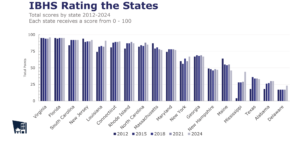For insurance, digital is the topic of the year, and possibly for the next decade!
While the industry had digital as a “priority” in nearly every survey the last few years, the events of 2020 have accelerated its importance – creating a tipping point for insurance. Malcolm Gladwell’s bestseller, The Tipping Point, described this phenomenon as a “magic moment when an idea, trend, or social behavior crosses a threshold, tips, and spreads like wildfire.” We now have a “Digital Wildfire” expanding rapidly every day, reshaping every aspect of our customers’ lives and businesses.
The COVID-19 crisis exposed less than desirable customer experiences due to manual, paper-bound processes, non-digital post-service transactions like claims, payments, printing, mail, a rise in online insurance purchases, and the need for extra caution due to fraud. Projects are getting reprioritized to adapt to this new reality. But in that process, companies need to consider prioritizing investments in the digital platforms that will meet their needs today and the future. Need more convincing on the imperative to create a digital experience for your customers? And, better yet, how to do it? Read our new report researched and written by Aite, Engaging Customers by Creating an Enriched Digital Customer Experience.
Digital Insurance Platforms – Digital Wildfire Creates A Burning Platform
Through our research over the last 5 years, we have found a top motivator for digital transformation is the need to meet customer and distribution channel expectations of a much-improved experience. We identified a strong intersection of business and consumer technology trends that are relevant to the insurance industry that require a new insurance platform. The insurance platform lays the groundwork of a new digital insurance business model defined by a focus on customer experience, business innovation and technological leadership, with rich and robust capabilities that will enable speed to value as a digital insurer.
We define a platform as an architected, networked system that provides access to a broad set of services, data and other capabilities; is continuously and seamlessly upgraded with newer technology, content and functionality; is accessed via APIs that are part of a robust, extensive API catalog; enables personalized customer engagement; is cloud-based with a designed-to-scale, pay-per-use pricing model; leverages AI and machine learning through embedded capabilities; is flexible to aggregate heterogeneous services from multiple providers (technology, data, InsurTech); and enables rapid “test and learn” for new business models and products while supporting current operational business models.
Fundamentally, the insurance platform model replaces the old paradigm of the integrated suite of core insurance systems focused on transactional processing with “one-size fits all” portals over the core. While that approach enhanced the traditional business of insurance of the last few decades, it does not meet the demands and expectations of a new era of insurance because it leaves unchanged the nature of the business model and the products insurers sell.
Today’s next generation insurance platform uses cloud-based technology architecture to unite core insurance processing systems—policy, billing, claims—with advanced digital and data/analytics capabilities and third-party services delivered via application programming interfaces (APIs) that will enable the customer-led digital transformation. Furthermore, platforms enable innovative companies to create speed to value, unique customer engagement, a “test and learn” platform for minimal viable products, and value-aligned, optimized costs.
Digital Platforms Must Digitize, Optimize and Innovate
At a 2020 SMA virtual event focused on Digital Platforms, Manish Shah, Majesco’s President and Chief Product Officer, spoke on our view of digital transformation, what defines a digital platform, and how Majesco Digital1st® Insurance is a next-generation platform to accelerate an insurer’s digital journey. We built Majesco Digital1st® Insurance from the ground up to provide ONE platform to enable organizations to pursue relentless innovation with speed and agility as they accelerate their journey on the digital maturity curve.
Manish described the digital transformation journey with three main parts:
- Digitize – Is the first step and enables organizations to create digital portals for interaction with traditional product and channels, to digitize and automate the existing processes.
- Optimize – The second step enables organizations to move beyond digital portals to create richer digital experiences beyond core transactions.
- Innovate – The final step and end goal, enables organizations to launch new and innovative products and services to transform your business and operating models for building sustainable, competitive advantage.
Customer expectations and changing market dynamics are shifting business and operating models and driving digital transformation. We believe that all three steps of digital maturity – Digitize, Optimize, and Innovate – are needed to build sustainable, competitive advantage in the digital age. Many of our customers are at the different steps from building next-generation customer and agent portals, optimizing the business with electronic bill payment, creating a powerful single quote and buy experience for different products across multiple policy systems and leveraging new dynamic sources of data to creating an innovative on-demand product for the market. These are just the tip of opportunities and innovation well underway.
Digital Leaders – From Owner to Orchestrator to Provider
Emerging digital leaders, many of whom align to our Knowing – Doing leader focus from our Strategic Priorities report, are aggressively investing in new business models, products, and processes – including customer engagement and distribution models aligned to a more digital economy and growing demographic.
Customers are looking for ways to make their lives simpler and have a great experience. The next generation of customer experience is bigger and broader, and it requires a digital platform and robust ecosystem that work together under one common platform across different core systems.
Given the nature of ecosystems, insurers can assume multiple roles, from owner of the unifying platform, to orchestrator of the products and services, or provider of products and services. What they achieve will depend on their ability to create a cohesive digital experience … requiring a digital platform that creates rich customer experiences; innovates business models, products and services; leverages a vast ecosystem of third-party capabilities; capture market opportunities; competes in the digital age; and reinvent the insurance industry. Future success and growth are tied to your answers and your digital transformation.
What is your digital strategy and journey? What role will you play with your customers? Are you investing in a digital platform that will take you across the entire journey or stop at the first step of portals?
Do you have a burning platform for today’s digital wildfire? If not, read Engaging Customers by Creating an Enriched Digital Customer Experience as a first step on your digital journey.




















 Travelers: Distracted Driving Incidents Continue to Rise
Travelers: Distracted Driving Incidents Continue to Rise  The Insurance Data Paradox: Structure Creates Flexibility
The Insurance Data Paradox: Structure Creates Flexibility  Going, Going, Gone: ‘Disruption’ to Shrink Traditional Premiums for Auto
Going, Going, Gone: ‘Disruption’ to Shrink Traditional Premiums for Auto  Allstate’s Safe Driving App Helps Reduce Chance of Collision by 25%
Allstate’s Safe Driving App Helps Reduce Chance of Collision by 25% 



